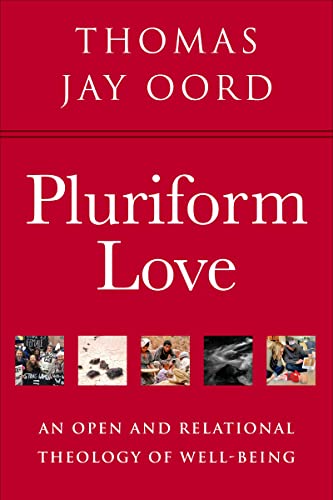How Paul saw the future
by Andrew Perriman
October 15, 2013
Paul had a sharp and vivid understanding of what the future held. It took the form of a prophetic narrative that would affect his own people Israel, the nations and the churches. It was not a matter of peripheral interest, an appendix to his theology. The narrative is pervasive in his letters and determinative for faith. People were converted to a new belief about the future. They believed, for example, that a day of wrath was coming from which they would be delivered by Jesus:
"...you turned to God from idols to serve the living and true God, and to wait for his Son from heaven, whom he raised from the dead, Jesus who delivers us from the wrath to come." (1 Thess. 1:9–10; cf. 1 Cor. 1:7–8)
They believed that they would sooner or later inherit, as a community, as a nascent culture or civilization, a radically new political-religious order when the God of Israel would be acknowledged as sovereign over the nations.
he expectation, moreover, was that the coming Day of the Lord (1 Cor. 5:5; 1 Thess. 5:2; 2 Thess. 2:2), when this vision of the future would be fulfilled, was not far off. The apocalyptic narrative overlay and reinterpreted the immediate historical experience of the synagogues and churches in the ancient pagan world. Its climax would come within a foreseeable and relevant future.
The point to stress here is that biblical “theology”, even at its most exotic and speculative, always addresses or has reference to the concrete, historically determined condition of the people of God amidst the nations.
For convenience the landscape of Paul’s eschatology can be mapped in two parts—what it meant for the “saints” to whom Paul addressed his letters and what it meant for everyone else. Please note that the biblical references are not proof-texts. They are pointers to whole arguments and narratives.
What the Day of the Lord would mean for everyone else
1. The overarching intention of the God of Israel was to judge the pagan system that had for so long opposed him and to install his own “Son” as king on his behalf above all rulers and powers (Rom. 1:18-32; cf. Acts 17:31).
2. He would punish those who had persecuted the churches (2 Thess. 1:4-10). Paul has no concept of “hell”.
3. The “man of lawlessness”, who appears to be a blasphemous pagan king in the mould of Antiochus Epiphanes, would be brought to nothing by the Lord Jesus at his coming (2 Thess. 2:3-8).
4. Righteous Gentiles would be “justified” when YHWH judged the Greek-Roman world and would even condemn unrighteous Israel (Rom. 2:6, 14-16).
5. For God to judge the pagan world with integrity, however, he had first to judge his own people, who had brought the name of God into disrepute among the nations (Rom. 2:24; 3:6). They would not be justified by their works of the Jewish Law on the day of God’s wrath. Rather, the Law would hold them to account (Rom. 3:19-20). Nothing short of a new creation would remedy the situation.
6. Paul does not expect his people to escape the catastrophe of divine judgment, but he retains the hope that after judgment the nation of Israel would repent of its disbelief and so be saved (Rom. 11:26).
What the Day of the Lord would mean for the saints
1. The inclusion of Gentiles in the family of Abraham pointed to the fact that YHWH would demonstrate himself to be God not of the Jews only but also of the nations (Rom. 3:29-30).
2. The churches were communities of eschatological formation—that is, they were designed for an eschatological purpose. Practically speaking, they were the means by which the new future would be brought about.
3. If they were to fulfil that purpose, they would have to be righteous communities—the unrighteous would not inherit the kingdom of God (eg. 1 Cor. 6:9-11; Eph. 5:5; 1 Tim. 6:14).
4. The churches could expect to face considerable opposition and persecution in the period leading up to the Day of the Lord. To the extent, however, that the saints were conformed to the image of the first martyr and re-enacted the story of his suffering and vindication, they had the assurance that they would overcome even the last enemy, death (Rom. 8:16-39). They are communities of the Son of Man, against whom the pagan empire made war, but who remained faithful and were ultimately vindicated and awarded the kingdom (cf. Dan. 7:21-22).
5. The Day of the Lord would be a day of battle—of intense persecution. The churches needed to prepare themselves for this in advance by putting on the armour of God (Rom. 13:11-12; Eph. 6;10-20; 5:6-8).
6. Paul was very conscious of the fact that it was the responsibility of the apostles to ensure that the churches were fit for eschatological purpose (1 Cor. 3:10-15). They would be his crown and ground for boasting on the Day of the Lord (Phil. 2:16; 1 Thess. 2:19).
7. Because the authority to judge had been given to Jesus, the Day of the Lord would be the day when Jesus, not YHWH, came to judge and save.
8. For the saints this would at last mean deliverance from their persecutors (2 Thess. 1:5-10) and resurrection for the dead “in Christ” so that they would have a share in the age to come (1 Cor. 15:23; 1 Thess. 4:16); the saints would be judged and vindicated and rewarded if they were found to have been faithful (Rom. 14:10; 1 Cor. 4:5; 2 Cor. 5:10).
9. These communities of the saints would then inherit the kingdom of God (1 Cor. 15:50; Eph. 1:14; 5:5; Col. 1:12; 3:24), when Jesus would be confessed as Lord by the nations (Phil. 2:11), and the martyrs would reign with him throughout the coming ages.
10. The reign of Jesus at the right hand of God is to continue until the last enemy, death, has been destroyed, at which point the authority to rule will be given back to God, the Father, Jesus himself will be subjected to God, and God will be all in all (1 Cor. 15:24-28).
11. Finally, creation itself will be set free from its bondage to decay (Rom. 8:21).
This is roughly the story that Paul tells about the future, as I see it. It is not an unprejudiced reconstruction of that story. It is as I see it. It is shaped by a number of assumptions that I make regarding i) how Paul has used his source material, the Old Testament in particular; and ii) how he understood the relation of such material to history. It is the sort of narrative that emerges when we read Old Testament and Jewish apocalyptic as an attempt to redescribe future historical events as the outworking of the intentions of Israel’s God. Or to turn it around, Paul has constructed a narrative of judgment and kingdom that demands an eventual historical outcome having to do with the real-world, political-religious relation between Israel and the nations.
* * * * * * * * *
Either Paul got the timing wrong or we’ve got the end wrong
by Andrew Perriman
Sat, 05/10/2013
Paul’s first letter to the Thessalonians, which some would argue was his second (Wanamaker), or his first and second combined (Murphy-O’Connor), was written to encourage a novice community of mostly Gentile believers to stand firm in the face of persecution until the parousia of the Lord, when the wrath of God would come against the world and they would be delivered from their suffering and united with their Lord. This is the narrative—or eschatological—frame of the letter, and it controls Paul’s argument at every point.
The same can be said of his first letter to the Corinthians. They “wait for the revealing of our Lord Jesus Christ, who will sustain you to the end, guiltless in the day of our Lord Jesus Christ” (1 Cor. 1:7–8). The rulers of the present age are doomed to pass away (2:6). The quality of the apostles’ work will be revealed when a day of fire comes (3:13). The Lord is coming to “bring to light the things now hidden in darkness and… disclose the purposes of the heart”, when everyone will receive his or her commendation from God (4:5). A “day of the Lord” is coming, when “the saints will judge the world”, and the righteous will inherit the kingdom of God (5:5; 6:2, 9). A time of distress is approaching; the “present form of this world is passing away” (7:26, 31). In the Lord’s supper they proclaim his death “until he comes” (11:26). The world will be condemned (11:32). The dead in Christ will be raised at his coming and will inherit the kingdom (15:23, 50-56). Paul prays that the Lord will come (16:22).
In fact, with the exception of Philemon, the same can be said of every one of Paul’s letters—even Romans. They are all written explicitly and intentionally in the light of an impending day of the Lord, a day of God’s wrath, which will entail severe affliction for the churches but also deliverance and vindication. Paul’s churches faced a more or less imminent “end”.
There are two basic interpretive strategies open to us:
we can reinterpret “imminent” or we can reinterpret “end”.
How are we supposed to deal with this, given that the world did not end imminently? We have the same problem, of course, with Jesus. There are two basic interpretive strategies open to us: we can reinterpret “imminent” or we can reinterpret “end”.
We could say that the traditional understanding of the “end” is correct but that Paul got the timing wrong. He expected the world to come to an abrupt end in the foreseeable future—perhaps even before he himself died—but he was wrong about that because in fact one day is as a thousand years with the Lord, even the Son was kept in the dark about the timing, etc. That would allow us to keep our traditional “end” intact—the whole package of second coming, rapture, resurrection, final judgment, inheritance of the kingdom, new heaven and new earth, lake of fire. But it can be postponed indefinitely.

Or we could say that Paul was more or less right about the timing but that we have misunderstood his “end”. We could argue that he shared a Jewish-apocalyptic narrative in which YHWH, as creator of the whole earth, asserts his right to judge and rule over the idolatrous pagan nations, which have for so long refused to acknowledge him and oppressed his people. We would then suppose—once we have understood how apocalyptic discourse works—that his eschatology mostly addresses the historical crisis that would mark the transition from an old age of pagan hegemony to a new age in which Jesus is confessed as Lord by the Gentiles. I have developed this argument in The Coming of the Son of Man: New Testament Eschatology for an Emerging Church.
This approach would mean that Paul has much less to say about our eschatological circumstances. The coming storm fills his horizon and he cannot see what lies beyond—except that he is certain that the creator God will have the final victory over the evil that has corrupted his creation (1 Cor. 15:24-28; Rom. 8:20-22). But it would mean that he has much more to say about the historical experience of the communities under his care. That makes him a much more responsible prophet and apostle. And I’m sure we can learn something from that.



















